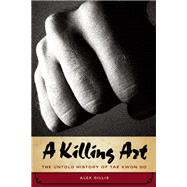
Note: Supplemental materials are not guaranteed with Rental or Used book purchases.
Purchase Benefits
What is included with this book?
The New copy of this book will include any supplemental materials advertised. Please check the title of the book to determine if it should include any access cards, study guides, lab manuals, CDs, etc.
The Used, Rental and eBook copies of this book are not guaranteed to include any supplemental materials. Typically, only the book itself is included. This is true even if the title states it includes any access cards, study guides, lab manuals, CDs, etc.
This is not a hobby for everyone, and it is perhaps odd to call it a “break,” especially because the Korean martial art that I practise, Tae Kwon Do, is extremely difficult to master and can lead to real breaks — bone breaks. Its creators embedded innumerable tests within its techniques, but the training is usually safe, and I always look forward to going. I walk into my dojang, the Korean name for a martial arts gym, hoping that my instructor, Mr. Di Vecchia, will be there with his old stories and wisdom, that Floyd will be stretching and preparing for one of his spectacular jumping front kicks, that Marc will show us the mid–air split kick once again, and that Martin will push us with his spirited sparring at the end of class. Anyone can begin the fundamentals of the art, but few can stick with it as these men have. I began Tae Kwon Do when I was a teenager, twenty–five years ago — when the art peaked in many ways — and I met these martial artists over the decades, as the physical moves hardened my muscles and strengthened my heart and mind.
The Koreans who created the martial art consciously set out to strengthen individuals and, eventually, entire nations. Tae Kwon Do is an art of self–defence, but if you enter the closed rooms of its history, you realize that it is the art of killing and if practised with care and intent, an art of empowerment. It can empower more than the body. The best martial artists apply physical techniques to mental states; they can erode or raise emotional substrata; they can build or destroy reputations, careers, friends, families, and countries. The complex paths they take — for better or worse — often depend on age–old loyalties and new–found betrayals.
I discovered this the hard way many years ago. On April 20, 2001, in the year of the Snake, I walked into the Novotel Hotel in Toronto, Canada, to wait for the “Father of Tae Kwon Do,” General Choi Hong–Hi, who would lead a three–day seminar for black belts. I was naive then, and revered the eighty–two–year–old Choi and the other founding members of Tae Kwon Do, including a man named Kim Un–yong, and I felt intimidated walking into the seminar room, partly because Choi was a hard taskmaster. He had become a major–general in the South Korean army at the age of thirty–three, and even though he had retired from the military in 1962, he was still known as “the General.” He and his men had sacrificed their bodies, careers, and families to perfect a martial art now practised by more than 70 million people in nearly 180 countries.
I can picture the first day of his 2001 seminar as if it were today: I wait in the Amsterdam Room of the Novotel with 100 black belts from the United States, Canada, Chile, Peru, Paraguay, Uruguay, Argentina, and Honduras. Standing among the bowing, whispering martial artists, I feel as though I could be waiting within a palace of the Chosŏn dynasty in 1394 — I imagine the ancient warriors waiting for dynastic rulers, the floors heated in the old style (invisible and underground), and the Korean geisha girls ready to sing the p’ansori verses that praise Confucian values and sagacious leaders.
The General and his men are extremely late, however. He is upstairs, talking and arguing with his son and the masters and grandmasters who will help during the seminar. These men once fought, parted, and threatened to kill one another over politics and, in some cases, over personal matters, but the masters and grandmasters know they owe their fortunes and reputations to the General, and everyone is trying to reconcile past threats with present ambitions.